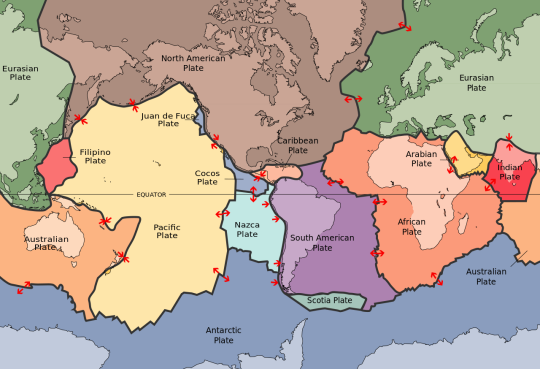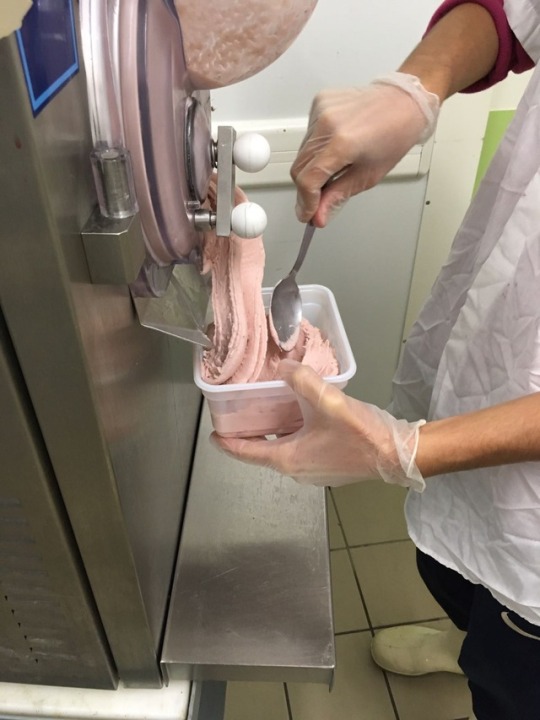#fougerouse
Text

Fougerouse virage on the Montbrison Road by Saint-Anthème, Auvergne region of central France
French vintage postcard, mailed to Firminy
#postkaart#region#anthme#carte postale#briefkaart#french#central#old#saint-anthème#sepia#fougerouse#france#road#virage#postkarte#vintage#postal#montbrison#photography#saint#mailed#ephemera#the montbrison road#postcard#tarjeta#photo#ansichtskarte#auvergne#historic#firminy
7 notes
·
View notes
Text
RÉVISER LA PROCÉDURE DU RÉFÉRENDUM D’INITIATIVE PARTAGÉE
ARTICLE
Référendum d’initiative partagée : la réforme souhaitée par Emmanuel Macron fera-t-elle bouger les lignes ?
Publié: 4 mai 2023, Jean Fougerouse, Université d’Angers THE CONVERSATION
Le discours d’Emmanuel Macron quant à un possible assouplissement des conditions de mise en œuvre du référendum d’initiative partagée pourra-t-il vraiment faire évoluer cette disposition et la portée…

View On WordPress
0 notes
Text

New research dates the formation of Earth’s continents
Researchers at Curtin University have established a new framework for dating the Earth's evolution including the formations of continents and mineral deposits.
The research, published in Earth Science Reviews today, studied Australia’s abundant lead-zinc ore deposits along with a vast global database, and determined that 3.2 billion years ago was a critical point in Earth’s history when the Earth changed from a layer-cake structure to a mode of remixing possibly driven by the start of global-scale plate tectonics, a process that still dominates the Earth system today.
Lead researcher Dr Luc Doucet from Curtin's Earth Dynamics Research Group, funded by an Australian Research Council Laureate Fellowship grant to co-author Professor Zheng-Xiang Li, said that one of the main questions they aimed to answer was when the continents as we know them today were first formed.
“To answer this question, we had to determine when the composition of the continental crust began to significantly differ from that of the Earth's mantle where the continental material was extracted from,” Dr Doucet said.
“The challenge was that we first need to understand how the Earth’s mantle evolved since the Giant Moon formation impact 4.5 billion years ago, when a giant asteroid collided with proto-Earth and modified Earth’s core and mantle.
We need to reconcile this well-established theory with the composition of the present-day mantle,” Dr Doucet said.
“We used lead isotope compositions from rock samples across space and time, including primitive meteorites that were formed at the same time as the solar system and various components of the Earth's layers, to re-construct Earth’s mantle evolution.”
Co-author Dr Denis Fougerouse, also from the Curtin School of Earth and Planetary Sciences, said they could now compare Earth’s mantle evolution with that of the continent by using measurements from large lead-zinc deposits, known for tracking continental crust composition through time, and Australia is endowed with abundance of such deposits.
"Australia has an estimated 52 billion tonnes of lead-zinc ore, making it the second-largest reserve in the world, just behind China.
They range from as old as 3.4 billion years in Western Australia’s Pilbara region to relatively young deposits at 285 million years, making them perfect for our study," Dr Fougerouse said.
Fellow co-author Dr Hugo Olierook, from Curtin's John de Laeter Centre, added that the team’s analysis revealed that lead-zinc deposits started to exhibit significant differences from the Earth’s mantle about 3.2 billion years ago.
“This period is considered to be the point at which plate tectonics began to be the dominant driver of continent formation on Earth. Earth is the only planet in our solar system that has plate tectonics and, perhaps not coincidentally, the only planet capable of hosting life,” Dr Olierook said.
A spin-off product of this ground-breaking research is that researchers will need to calibrate the radiometric ages they acquired for dating Earth evolution and mineralisation events in future using the newly established uranium-lead isotopic system curves by the Curtin group.
0 notes
Text

Saint-Guilhem-le-Desert / France (by Arnaud Fougerouse).
#travel#europe#tourism#france#herault#Medieval#Saint-guilhem-le-desert#Frankreich#Francia#Villages#Picturesque
1K notes
·
View notes
Photo

Mont Saint Michel - France (by Fougerouse Arnaud)
#Mont Saint Michel#France#Frankreich#Europe#Nature#Landscape#Outdoor#View#Old#Historic#Sunset#Photography#Travelling#Traveling#Travel#Tourism#Holiday#Urlaub#Reisen
879 notes
·
View notes
Text
'Fool's gold' actually contains a newly discovered type of real gold, scientists find
https://sciencespies.com/physics/fools-gold-actually-contains-a-newly-discovered-type-of-real-gold-scientists-find/
'Fool's gold' actually contains a newly discovered type of real gold, scientists find
The mineral pyrite was historically nicknamed fool’s gold because of its deceptive resemblance to the precious metal.
The term was often used during the California gold rush in the 1840s because inexperienced prospectors would claim discoveries of gold, but in reality it would be pyrite, composed of worthless iron disulfide (FeS₂).
Ironically, pyrite crystals can contain small amounts of real gold, although it is notoriously hard to extract. Gold hiding within pyrite is sometimes referred to as “invisible gold”, because it is not observable with standard microscopes, but instead requires sophisticated scientific instruments.
It wasn’t until the 1980s when researchers discovered that gold in pyrite can come in different forms – either as particles of gold, or as an alloy, in which the pyrite and gold are finely mixed.
In our new research, published in Geology, my colleagues and I discovered a third, previously unrecognized way that gold can lurk inside pyrite. When the pyrite crystal is forming under extreme temperature or pressure, it can develop tiny imperfections in its crystal structure that can be “decorated” with gold atoms.
What are these ‘crystal defects’?
The atoms within a crystal are arranged in a characteristic pattern called an atomic lattice. But when a mineral crystal such as pyrite is growing inside a rock, this lattice pattern can develop imperfections.
Like many minerals, pyrite is tough and hard at Earth’s surface, but can become more twisty and stretchy when forming deep in the Earth, which is also where gold deposits form.
When crystals stretch or twist, the bonds between neighboring atoms are broken and remade, forming billions of tiny imperfections called “dislocations”, each roughly 100,000 times smaller than the width of a human hair, or 100 times smaller than a virus particle.
The chemistry of these atomic-scale imperfections is notoriously difficult to study because they are so small, so any impurities are present in absolutely minuscule quantities. Detecting them requires a specialized instrument called an atom probe.
An atom probe can analyze materials at extremely high resolution, but its main advantage over other methods is that it allows us to build a 3D map showing the precise locations of impurities within a crystal — something that was never possible before.
Our research reveals that dislocations within pyrite crystals can be “decorated” with gold atoms. This is particularly common where the crystals have been twisted during their history; here, gold can be present at concentrations several times higher than in the rest of the crystal.
A potential goldmine
Why should anyone care about something so tiny? Well, it gives interesting insights into how mineral deposits form, and is also a potential boon for the gold mining industry.
Previously, it was suspected that gold in anomalously rich pyrite crystals was in fact made of gold particles formed during a multi-step process, suggesting the pyrite and gold crystallized at different times and then became clumped together.
But our discovery that gold can decorate these crystal imperfections suggests that even pyrite crystals with relatively high gold content can form in a single process.
Our discovery may also help gold miners more efficiently extract gold from pyrite, potentially reducing greenhouse emissions. To extract the gold, the mineral is usually oxidized in large reactors, which uses considerable amounts of energy.
Dislocation sites within crystals could potentially offer an enhanced partial leaching or a target for bacteria to attack and break down the crystal, releasing the gold in a process known as “bio-leaching”, thus potentially reducing energy consumption necessary for extraction. This idea is still untested, but definitely merits investigation.
If it helps pave the way for more sustainable gold-mining methods, then perhaps fool’s gold isn’t so foolish after all.
Perhaps pyrite still lives up to its historic reputation of “fool’s gold” until better, more environmentally sustainable ore processing techniques are developed.
Denis Fougerouse, Research Fellow, School of Earth and Planetary Sciences, Curtin University.
This article is republished from The Conversation under a Creative Commons license. Read the original article.
#Physics
0 notes
Text
Depuis la semaine dernière, nous avons dans notre équipe d’animation une nouvelle recrue!
Il s’agit de Jordan FOUGEROUSE, nouvel animateur que les enfants pourront rencontrés lors des temps méridiens à l’école de Bonson mais également au club ados parmi vos jeunes ados les vendredis et vacances!!
BIENVENUE à lui!!
0 notes
Video
Glacial Lagoon by Fougerouse Arnaud
Via Flickr:
This photograph was taken at the glacial lagoon of Jökulsárlón in southern Iceland. The biggest glacier of Iceland, named Vatnajökull, began to retreat due to the rising temperatures during early 1900s, the melting and the retreat created a lagoon somewhere around 1940. Nowadays the lagoon is still growing and big icebergs are continuously falling from the tongue of the glacier. The lagoon is pretty close to the sea, and at high tides, seawater flows into the lagoon, melting the iceberg who are going to derive into the sea at low tides. You can found dozens of icebergs, from small to big scattered around the closest dark sand beach, left here to melt. The view is very astonishing, but unfortunately, I went there three times during my trip and every time it was pouring rain… I still managed to get some shot, hidden under my poncho. Here is the result.
0 notes
Text
Cl CONSTITUTIONNEL : LA RÉCENTE INTERPRÉTATION RESTRICTIVE SUR LE RIP « INTERROGE »
« Le nouveau rejet du RIP par le Conseil constitutionnel interroge »
TITRE LA TRIBUNE
Les récentes tentatives d’utilisation du RIP pour s’opposer à des projets gouvernementaux ont toutes été rejetées, une tendance qui interroge le rôle politique de cet outil. Par Jean Fougerouse, Université d’Angers.
Cet article proposé ci contre avait été publié par The Conversation sous un autre titre
«…

View On WordPress
0 notes
Photo





Comparaison de turbine horizontale et verticale
Merci à Sandrine Fougerouse Bonanno pour ses photos.
0 notes
Text
LE RIP ( Référendum d’Initiative Partagée) NEUTRALISÉ ?
LE RIP ( Référendum d’Initiative Partagée) NEUTRALISÉ ?
Article
Le référendum d’initiative partagée, un instrument démocratique neutralisé
Jean Fougerouse, Université d’Angers
Publié: 30 novembre 2022, THE CONVERSATION
La proposition de référendum d’initiative partagée (RIP) sur la création d’une taxe sur les superprofits soutenue par la Nupes a été rejetée par décision du Conseil constitutionnel le 25 octobre 2022. Il s’agit de la troisième…

View On WordPress
0 notes
Photo

Saint-Guilhem-le-Désert - France (by Fougerouse Arnaud)
#Saint-Guilhem-le-Désert#France#Frankreich#Europe#Village#Buildings#Houses#Old#Historic#Ancient#Photography#Travelling#Traveling#Travel#Tourism#Holiday#Urlaub#Reisen
584 notes
·
View notes